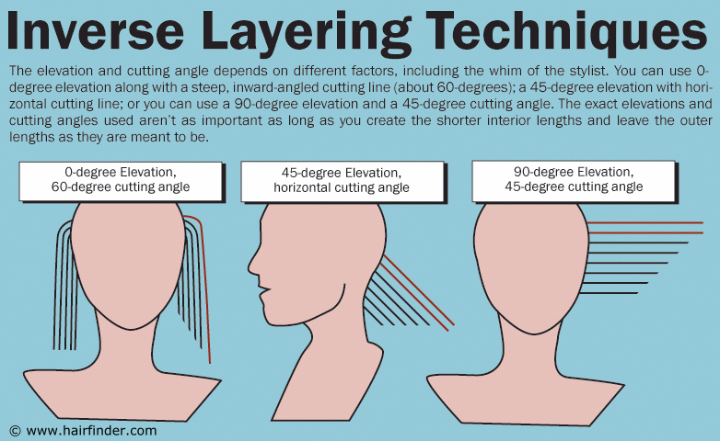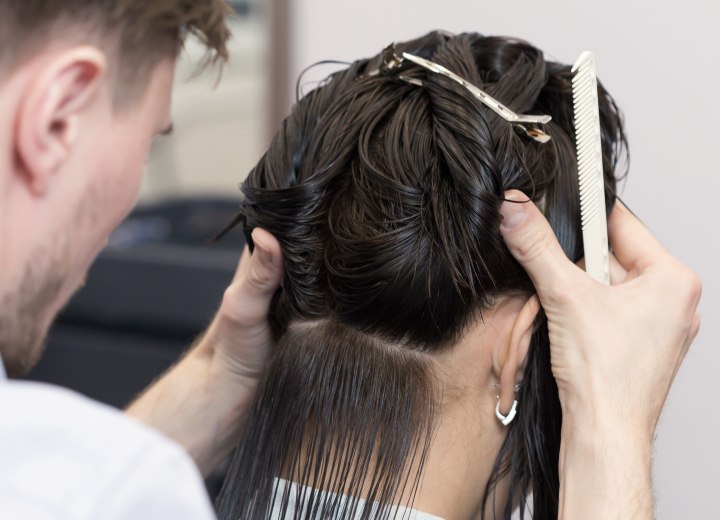Undercutting or Inverse Layering

Can you give me instructions on how to cut hair to make it curve under rather than flip up? The hair is of medium length and fine to medium in texture, but a fairly full head of hair.
A: The easiest method to use in order to simplify styling the hair to curl under is to use a technique of undercutting or inverse layering.
But first, let's discuss the factors that can make the "curve under" more difficult:
Curly and very curly hair is also problematic for obvious reasons. These hair types require more strident styling to create the direction you want for the hair. In addition to the blow-dry styling with a round brush, you will want to use a flat iron or a large-barrel curling iron to heat style the hair and create the desired direction.
Both of these hair types and styling methods are subject to the effects of humidity and can revert to their natural states easily with moisture and heat in the environment.
Yet even those women with very straight and mostly straight hair often have difficulty getting that curve under effect. This is usually because the thickness of the hair results in too much bulk in the underside that pushes the hair outward along the natural curve of the neck. This is where the need for special cutting techniques comes in.
The inverse layering technique involves creating shorter lengths of hair on the inside (the hairs that lie closest to the skin) which removes a significant portion of the bulk on the lower portions of the hair and results in the hair more easily curving under toward the inside.
This is accomplished by sectioning off the upper sections of the hair (the top, crown and upper halves of each side section) The lower sections are then cut to create short to long layers with the inside layers being shortest, and the outer layers becoming longer. The longest of these layers should be at least one half-inch shorter than the upper section at its longest.

A skilled stylist with a razor tool can often perform this layering freehand and create the desired effect, but whether with a razor or shears, this is the principle behind the technique.
This will result in a tapering effect along the inner walls of the hairstyle and will allow the hair to curl under more easily. However, there may still be a need to style the hair with blow-dryer and brush, or even heated appliances in order to get the effect you want, but this will make things easier to accomplish.
©Hairfinder.com